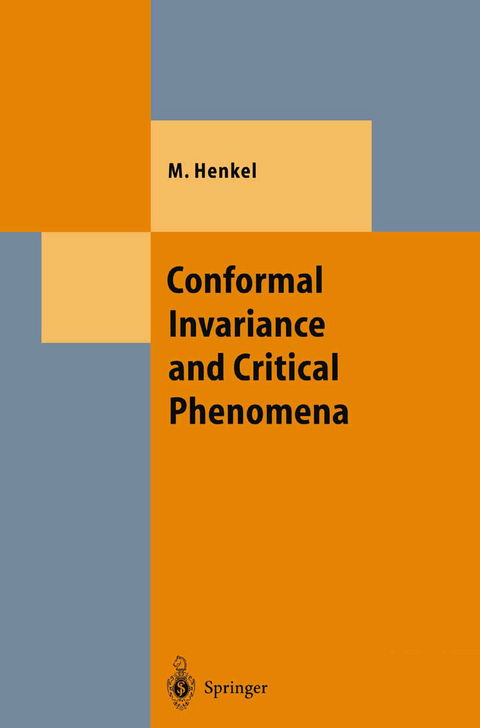
Conformal Invariance and Critical Phenomena
Seiten
1999
|
1999
Springer Berlin (Verlag)
978-3-540-65321-9 (ISBN)
Springer Berlin (Verlag)
978-3-540-65321-9 (ISBN)
Critical phenomena arise in a wide variety of physical systems. Classi cal examples are the liquid-vapour critical point or the paramagnetic ferromagnetic transition. Further examples include multicomponent fluids and alloys, superfluids, superconductors, polymers and fully developed tur bulence and may even extend to the quark-gluon plasma and the early uni verse as a whole. Early theoretical investigators tried to reduce the problem to a very small number of degrees of freedom, such as the van der Waals equation and mean field approximations, culminating in Landau's general theory of critical phenomena. Nowadays, it is understood that the common ground for all these phenomena lies in the presence of strong fluctuations of infinitely many coupled variables. This was made explicit first through the exact solution of the two-dimensional Ising model by Onsager. Systematic subsequent developments have been leading to the scaling theories of critical phenomena and the renormalization group which allow a precise description of the close neighborhood of the critical point, often in good agreement with experiments. In contrast to the general understanding a century ago, the presence of fluctuations on all length scales at a critical point is emphasized today. This can be briefly summarized by saying that at a critical point a system is scale invariant. In addition, conformal invaTiance permits also a non-uniform, local rescal ing, provided only that angles remain unchanged.
1. Critical Phenomena: a Reminder.- 2. Conformal Invariance.- 3. Finite-Size Scaling.- 4. Representation Theory of the Virasoro Algebra.- 5. Correlators, Null Vectors and Operator Algebra.- 6. Ising Model Correlators.- 7. Coulomb Gas Realization.- 8. The Hamiltonian Limit and Universality.- 9. Numerical Techniques.- 10. Conformal Invariance in the Ising Quantum Chain.- 11. Modular Invariance.- 12. Further Developments and Applications.- 13. Conformal Perturbation Theory.- 14. The Vicinity of the Critical Point.- 15. Surface Critical Phenomena.- 16. Strongly Anisotropic Scaling.- Anhang/Annexe.- List of Tables.- List of Figures.- References.
| Erscheint lt. Verlag | 16.4.1999 |
|---|---|
| Reihe/Serie | Theoretical and Mathematical Physics |
| Zusatzinfo | XVII, 418 p. |
| Verlagsort | Berlin |
| Sprache | englisch |
| Maße | 155 x 235 mm |
| Gewicht | 764 g |
| Themenwelt | Mathematik / Informatik ► Informatik ► Theorie / Studium |
| Naturwissenschaften ► Physik / Astronomie ► Allgemeines / Lexika | |
| Naturwissenschaften ► Physik / Astronomie ► Festkörperphysik | |
| Naturwissenschaften ► Physik / Astronomie ► Theoretische Physik | |
| Schlagworte | Algebra • Application of integrable systems in statistical p • Application of integrable systems in statistical physics • Computational Physics • Critical Phenomena • Infinite-dimensional Lie algebras • Mathematische Physik • Numerical Methods • Phasenübergänge • phase transitions • Quantenfeldtheorie • quantum field theory |
| ISBN-10 | 3-540-65321-X / 354065321X |
| ISBN-13 | 978-3-540-65321-9 / 9783540653219 |
| Zustand | Neuware |
| Haben Sie eine Frage zum Produkt? |
Mehr entdecken
aus dem Bereich
aus dem Bereich
was jeder über Informatik wissen sollte
Buch | Softcover (2024)
Springer Vieweg (Verlag)
37,99 €
Grundlagen – Anwendungen – Perspektiven
Buch | Softcover (2022)
Springer Vieweg (Verlag)
34,99 €
Eine Einführung in die Systemtheorie
Buch | Softcover (2022)
UTB (Verlag)
25,00 €


